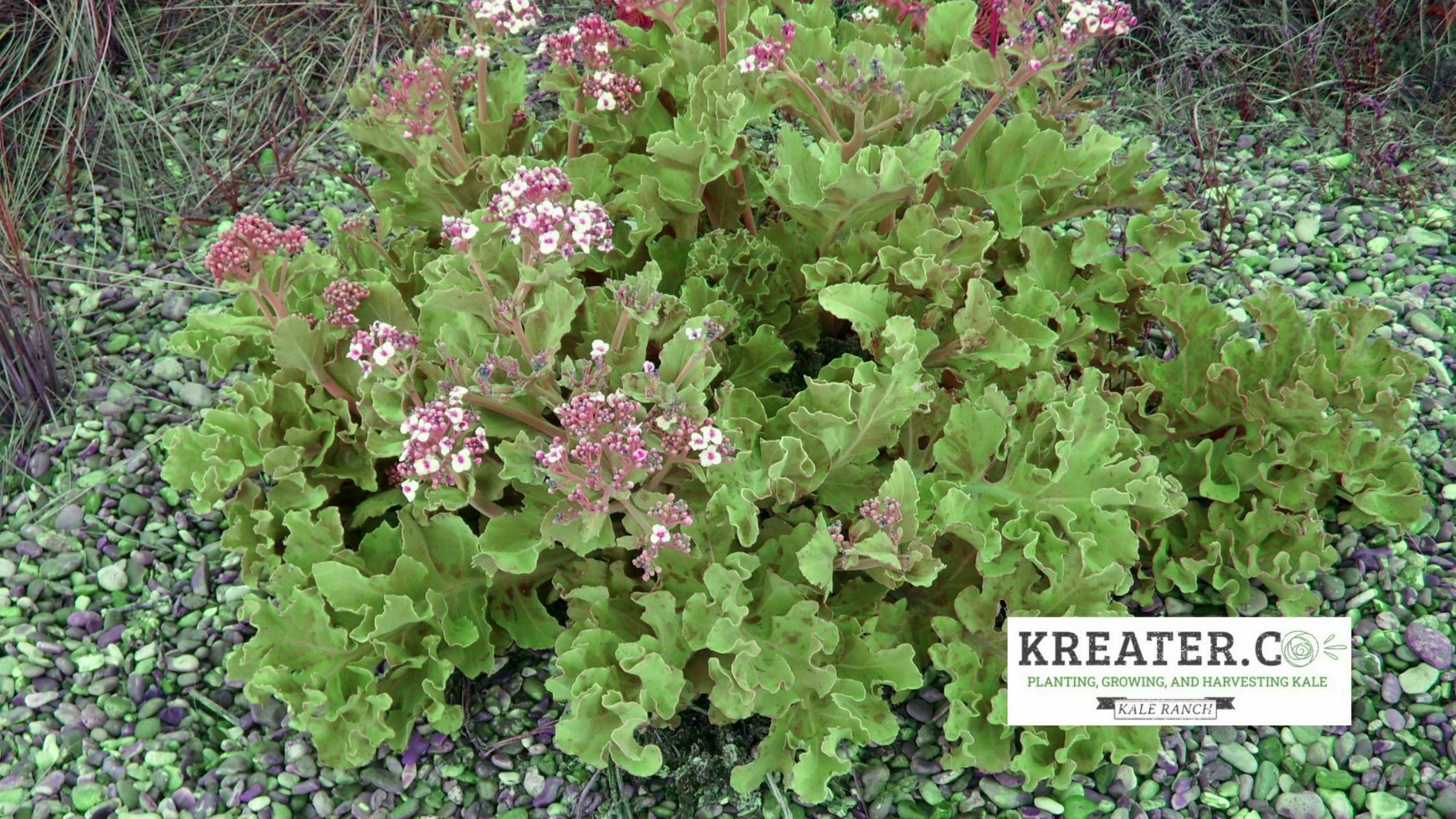Looking for a new colorful addition to your garden? Then how about kale flowers! This is a great little project for the gardener in you since kale plants require very minimal care for a wonderful red, pink, purple, or white show.
So today, we’ll be telling you all you need to know about how to plant ornamental kale so you can brag about your plant growing skills at your next tea party.
So if you thought of kale as this fantastic and super healthy, powerhouse leafy green veggie -was all there was to it, then think again. Kale has been listed in American seed catalogs for home gardeners interested in plants for their amazing decorative value. Check out all about types of kale seeds.
Planting ornamental kale flowers in your home garden will definitely make your garden get to the next level and will surely give you and your friends something to talk about as you show off your pretty and colorful kale plants.
Now that you are aware that kale has a lot to offer as an ornamental and decorative plant find out how to make it happen for your garden.
How to Plant Ornamental Kale Flowers Quick Guide
- Choose the right soil: Plant your ornamental kale in moist, fertile, well-drained soil with a pH between 5.8 and 6.5.
- Sow your seeds: Ornamental kale seeds should be sown about 6-10 weeks before the first frost. The seeds need light to germinate, so they should be planted about 1/4 inch deep.
- Select the right location: Keep the soil moist in a bright location at about 70 degrees Fahrenheit.
- Transplant seedlings: Once your seedlings emerge, they can be transplanted into the garden or a larger container. Ensure the root ball is loosened before planting.
- Spacing: They should be planted 12 to 15 inches apart to allow for growth, as these plants can grow 12 to 18 inches tall.
- Watering: Keep your ornamental kale flowers well-watered, providing at least one inch of water per week.
- Harvesting: If you’re growing ornamental kale flowers for cut flowers, harvest them when they are fully mature for long-lasting blooms.
What are ornamental kale flower plants: Cultivation and History
Ornamental kale flower plants (Brassica oleracea) and their cousin, the ornamental cabbage, were developed for their spectacular colors and are not edible.
Although Kale Flowers are sometimes called flowering kale, the plants rarely put out real flowers.
The color is all in their extravagantly ruffled and feathered leaves. Ornamental kale plants are best used as an annual in spring and fall gardens and container gardens.

Instead, the name refers to the center leaves of pink, purple, red, or white that give the illusion of a blossom surrounded by foliage.
The cultivation of kale, or “cole,” as the Romans called it, dates back at least 4,000 years, according to Gerald Klingaman, retired Extension Horticulturist of Ornamentals at the University of Arkansas.
It made its way from the Mediterranean to China and then to Japan.
Between 1929 and 1931, USDA horticulturists Dorsett and Morse conducted an expedition to China, Japan, and Korea. It is believed that ornamental kale was one of the plant specimens they brought back with them. There is a certain type of kale that you can grow indoors.
Kale Flowers Propagation:
Kale Flowers are grown from seed. Plants are grown from seeds. Directly sow seeds into your flower garden.
Propagation of ornamental kale flowers can be done through seeds. Here’s how:
- Seed Collection: If you have a mature ornamental kale plant, you can let it flower and produce seeds. Once the seed pods have dried out on the plant, they can be collected and stored in a cool, dry place until you’re ready to sow them.
- Sowing: Sow the seeds in a seed tray filled with a good quality potting mix. The seeds need light to germinate, so they should be sown on the surface or covered very lightly with soil.
- Germination: Keep the seed tray in a warm, well-lit spot. The seeds should begin to germinate within 7-14 days. Ensure the soil remains moist but not waterlogged.
- Transplanting: Once the seedlings have developed a few true leaves (the initial leaves are known as cotyledons and are not true leaves), they can be carefully transplanted into their own pots or directly into the garden, depending on your climate and the time of year.
- Growth: After transplanting, keep the plants well-watered and in a sunny location. Ornamental kale grows best in cooler temperatures, so they are ideal for fall or early spring planting.
Remember, propagating your own ornamental kale from seeds can be a rewarding process, and it gives you the opportunity to select the most beautiful and healthy plants for seed collection.
How to grow ornamental Kale
Growing flowering kale can be done in two different ways:
- By starting seeds
- With started plants purchased from the store.
Because the seeds need light to germinate, they can be sprinkled directly on the surface of the medium in flats or pots. For the fall garden, plants should be started by the first of July.
Kept moist, seedlings should sprout in three to five days and ready to place outside by the middle of August. The seedlings should be spaced 12-20 inches apart depending on the variety’s mature size.
You can also purchase plants directly from the store. Sometimes they don’t grow much after they’ve been in pots, so you might want to purchase the size you need.
Plant the potted kale, so the lowest leaves are flush with the ground. The main consideration for flowering kale growing conditions is that the plants need cool weather to develop the best leaf color.
Because they can stand temperatures well below freezing, ornamental kale often lasts through the winter. Ornamental kale likes full sun and rich, well-drained, slightly acidic soil with a soil pH between 5.8 and 6.5. Kale can be planted in the garden or containers.
Growing Flowering Kale from Seeds
Step 1: Gather Your Materials
You’ll need ornamental kale seeds, a seed tray or small pots, good quality potting soil, and a clear plastic bag or a propagator.
Step 2: Sow the Seeds
Fill your seed tray or small pots with the potting soil. Sow the seeds on the surface, as they need light to germinate. You can cover them lightly with a thin layer of soil.
Step 3: Create a Humid Environment
Cover the seed tray or pots with the clear plastic bag or place them in the propagator. This helps to create a humid environment that encourages germination.
Step 4: Place in a Warm, Bright Spot
Keep the tray in a spot that receives plenty of indirect light and where the temperature is around 70 degrees Fahrenheit.
Step 5: Wait for Germination
The seeds should begin to germinate within 7-14 days. Once the seedlings have developed their first set of true leaves, they can be transplanted into larger pots or directly into the garden.
Growing Flowering Kale from Store-Bought Plants
Step 1: Choose Healthy Plants
When buying ornamental kale plants from the store, look for those that are healthy and free from signs of disease or pest damage. The leaves should be vibrant and the plant should be well-rooted in its pot.
Step 2: Prepare Your Garden
Choose a spot in your garden that receives full sun to partial shade. The soil should be well-draining and rich in organic matter.
Step 3: Plant the Kale
Dig a hole that’s large enough to accommodate the root ball of the kale plant. Position the plant in the hole so that it’s at the same depth as it was in its original pot. Backfill the hole with soil, firming it gently around the base of the plant.
Step 4: Water Thoroughly
After planting, water your ornamental kale thoroughly. Continue to provide it with regular watering throughout its growth, keeping the soil evenly moist but not waterlogged.
Step 5: Maintain the Plants
Apply a balanced fertilizer monthly to promote healthy growth. Monitor the plants for signs of pests or diseases and treat as necessary. Enjoy the vibrant colors and textures of your flowering kale!
Other considerations:
Grow Flowering Kale plants in full sun. They will tolerate partial shade. We recommend partial shade when growing them in hot regions of the country.
- Grow in rich, well-drained soil.
- This cool-weather flower prefers cool soil and air temperatures 50 to 60 degrees or lower.
- Keep soil moist, not wet. Water as needed, especially during dry weather.
- Fertilize plants once a month with a fertilizer high in nitrogen. Liquid fertilizers work best for fast growth.
- Mulch around plants for a neat and tidy appearance and to help keep the soil cool and moist.
- If you eat the leaves, they are bitter in warm or hot weather. They will turn sweeter after the first frost.
- Kale Flowers Bloom: Summer through Winter.
Flowering Kale Care
Flowering kale care is not rocket science and is actually pretty easy and simple! Just keep an eye on the following:
Keep the soil moist. First and foremost, it is not to let the plants dry out. They can’t stand overly dry conditions, so they need to be kept well watered. In other words, keep the soil moist but not waterlogged as the plants develop.
About fertilizer. Too much fertilizer can interfere with color and cause stem elongation, so fertilizing kale at planting time should be enough. Use a balanced fertilizer (ratio 3-1-2 or 1-1-1) with micro-nutrients.
The University of Minnesota Extension recommends fertilizing kale with a nitrogen-rich fertilizer when the plants reach 4 inches tall. Alternatively, you can side-dress with compost and water with compost tea weekly to nourish your kale.
When the plants mature and cooler weather arrives, the color of the foliage will deepen to the desirable and decorative blue-greens, reds, and purples.
Monitor the kale for pests. For this, you need to cut off flower stems as soon as they appear. Kale Pests and diseases are pretty much the same as those that affect edible kale and are treated accordingly.
Another option is to handpick caterpillars and other pests. Because diseases can be spread from one year to the next, rotate the location of your ornamental kale every season.
Cabbage Loopers are a common problem, but as stated, these can be pick by hand. Cabbage worms and root maggots can also be a problem. If you are not going to eat the Kale, use insecticides as needed. You shouldn’t be too worried about disease problems since these are infrequent.
Whether you are harvesting the leaves for the kitchen or a bouquet, be sure to sterilize the shears or anvil pruners with rubbing alcohol to avoid spreading diseases.
Kale is definitely a plant meant to look attractive, and while it is certainly edible, it generally has a bit of bitter taste to it. The small new leaves are typically used in salads, while larger leaves can be chopped or shredded and boiled or steamed.



